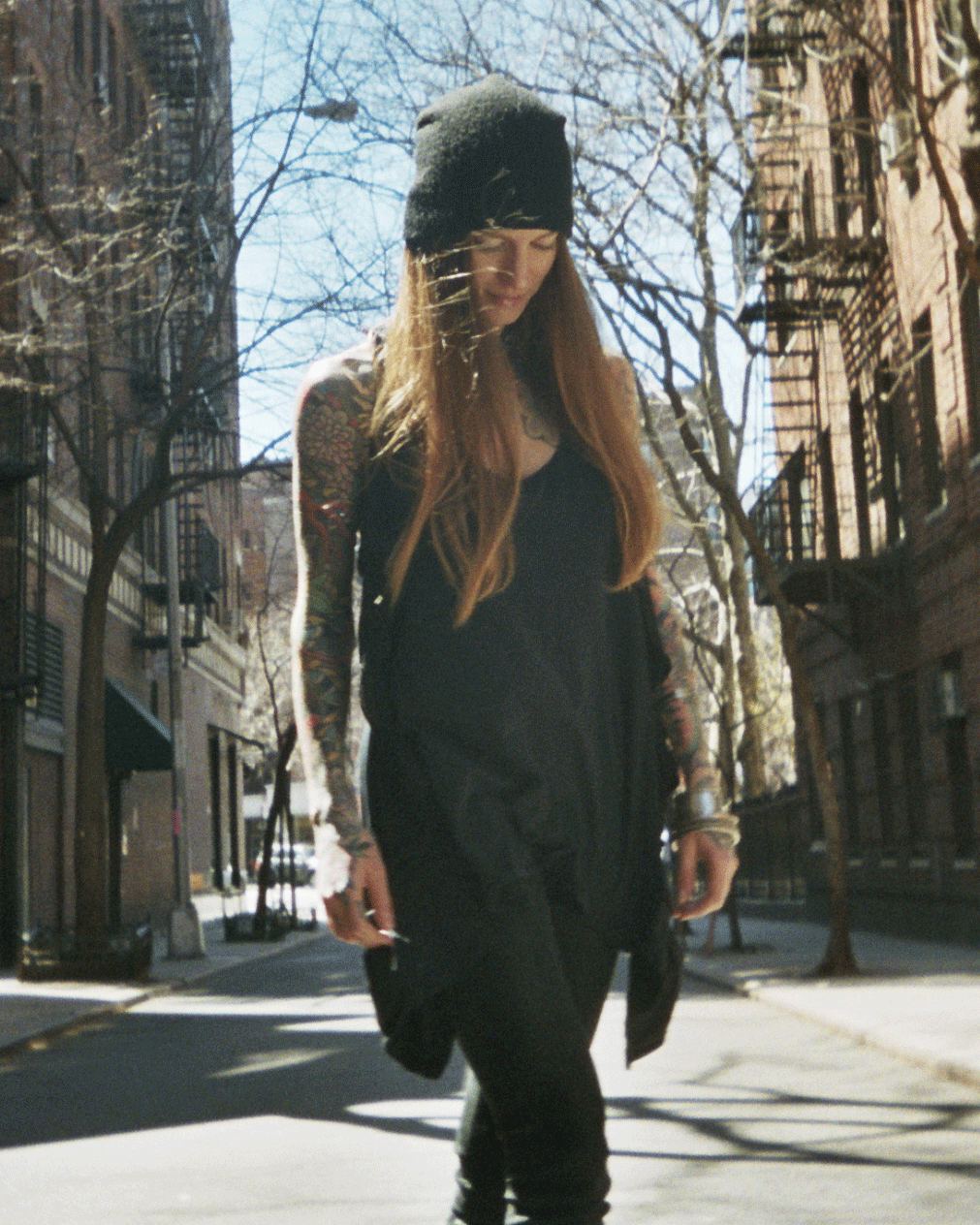
- Interview by Ryan & Tina Essmaker April 9, 2013
- Photo by Ryan Essmaker
Sara Blake
- artist
- designer
- illustrator
Sara Blake, aka ZSO, is an NYC-based illustrator, designer, and fine artist. She is a graduate of NYU’s Gallatin School of Individualized Study with a concentration in Graphic Art and Postmodern Studies, but has worked in design and art direction since graduation. Based in the West Village, Sara works as a freelance illustrator and exhibiting artist, as well as a freelance art director.
Interview
 Editor’s note: An updated version of this interview, including new images and work, is featured in print in The Great Discontent, Issue One, available in our online shop.
Editor’s note: An updated version of this interview, including new images and work, is featured in print in The Great Discontent, Issue One, available in our online shop.
Describe your path to becoming an illustrator.
When I was in preschool, I had a googly eye and had surgery to correct it. Post-surgery, I had to wear a really goofy eye patch for a while, which made me look like a baby pirate. I was already shy and having the eye patch wasn’t conducive to making friends. My parents realized that I wasn’t doing so well socially, so they put me in front of crayons and paper in hopes that it would give me something positive to do and help me feel better about myself. I became obsessed with drawing as opposed to playing with other children (laughing) and even though I wasn’t that good at it, people gave me positive reinforcement by telling me they liked my art. Throughout school, I said I wanted to be an artist, even though I didn’t know how I could make a living doing that.
After high school, I got a liberal arts education at NYU instead of going to an art school. At that time, I still didn’t know how to make a proper career out of my interests and it wasn’t until after graduation that I figured out how to submit my portfolio and approach potential clients about work. That all happened very late in the game for me.
Where did you grow up?
I grew up in Richmond, VA, but my goal was always to get out of there and, at 18, I moved to New York City to attend NYU. I probably should have gone to a real art school instead, but I’m a very determined person and once I make up my mind, it’s hard to change it. Because of that, I didn’t look into any other colleges. I was part of the smalled department at NYU, which gives students access to all the schools and departments so they can create their own major. While I mostly focused on the studio art program, I also took a variety of interdisciplinary courses in postmodern studies. Then, I started working in advertising right after school.
I actually started my first job while I was still a junior at NYU. It didn’t pay much. I had no idea what I was doing; I learned on the job and faked a lot of things. Somehow, I got a job at a small boutique agency after that. There, I worked as a junior production designer for about a year, which meant I mostly did grunt work and sometimes, design. My art director there was the person who encouraged me to explore illustration because she noticed that I spent all my time talking about it and used lunch breaks to read illustration blogs rather than design ones. She said to me, “If you like illustration so much, then you should look into making it your job. People do this for a living.” I was inspired by what she said and three months later, I quit my job on the same day I got a raise. (laughing) However, I continued working for the company as a freelancer for about six months while I started doing illustration.
At that point, I was 23, out of school, working in graphic design, and still had no style in illustration. I was really struggling. I remember a night of frustration when I decided to throw away everything I was working on and start over. Without putting pressure on myself, I drew a picture of my sister and that was it—that was when I found my style.
You do have a very distinct, recognizable style.
I think that, for a long time, I had tried to draw very realistically, but I’m not the best realistic drawer. Instead, I decided to embrace that and use my instincts to determine what I would abstract and what I would base in reality. There’s a similar challenge with caricature drawing because you have to decide what is going to be representative of the subject matter.
From there, I continued to try to find illustration jobs, but was unsuccessful. I acclimated myself to hearing “no” and didn’t get a paying job for two years. I emailed everyone I knew and offered to do free work. I went into bookstores, looked at the mastheads of magazines for art directors’ names, and emailed them. I did whatever I could, but after six months of freelancing, my money ran out and I went back to a day job and continued to illustrate at night. For the past five years, I’ve worked as much as possible and have put in many 100 hour work weeks. I’m just now starting to get more sleep and that’s awesome.
“…for a long time, I had tried to draw very realistically, but I’m not the best realistic drawer. Instead, I decided to embrace that and use my instincts to determine what I would abstract and what I would base in reality.”
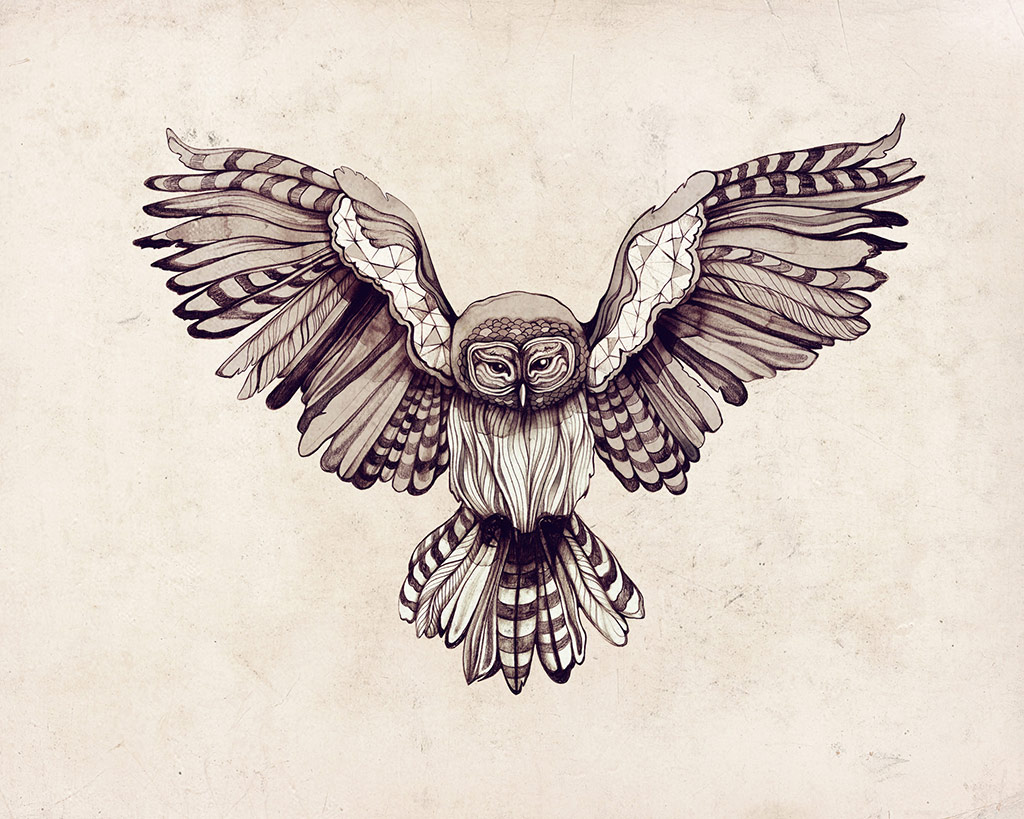
Do you want to talk about having a day job and doing illustration on the side? I (Ryan) have followed your work for a while and didn’t realize you had a day job.
I’ll say this. The one thing you have to do as an illustrator is market yourself because you are your brand. Sometimes, that can feel really dirty. Sometimes you start to really annoy yourself. But at the same time, you have to promote yourself. I can’t tell you how many jobs I’ve gotten from posting what I’m up to and reminding people that I’m here.
Also, when I was starting out, I wasn’t confident. I thought I had to project myself as a successful, independent illustrator who was making a living doing illustration, although that was not the case at all. I do work a day job, which I’m more open about now and it’s also a little more balanced; I’m doing less graphic design and more illustration.
The turning point for me becoming more open about having a day job was when I gave my first talk to students—I was so nervous! At that time, I was still promoting myself as just an illustrator. I knew the students I would be speaking to were likely under pressure to make a living solely from illustration after graduation. That wasn’t what I was doing and it’s not even what I would recommend doing. I decided to be open with them and have since continued to do so. I even added my day job into the about section of my website—I’m an art director at IBM.
Do you hope to get to the point where you can do illustration full-time?
I don’t know how that’s going to work. I think it will involve cutting down on my living expenses. (laughing) I’m still brainstorming how to make a living from illustration. If you have any ideas, let me know.
Was creativity a part of your childhood?
I was a very outdoorsy, very daydreamy kid. I tried to get into playing musical instruments, but failed. My sister picked up all my instruments and now she’s the musician of the family. I was into creative writing, though. I actually went to college thinking I would be an artist or a creative writer.
You said you grew up in Richmond. What was the culture like there? Was it creative or was creativity mainly encouraged by your family?
Richmond isn’t that far south, but for some reason, it felt very Southern and conservative when I was growing up there. It’s weird because VCU is there and it’s a really good art school, but when I was there, VCU was still up and coming. Richmond does have a good punk music scene and to this day, it also has a great tattoo culture. It has little subcultures, but I wasn’t involved in any of them when I lived there; I was in the more conservative part of town and rebelled by dating guys from public school while I went to a really preppy all girls school that made us go to chapel three days a week. All I knew was I needed to get out of there and go to college in the biggest city I could find, which led me to New York City.
“In junior high and high school, the images I looked to for creativity were fashion spreads. The crazy costumes and styling inspired me to draw imaginatively.”
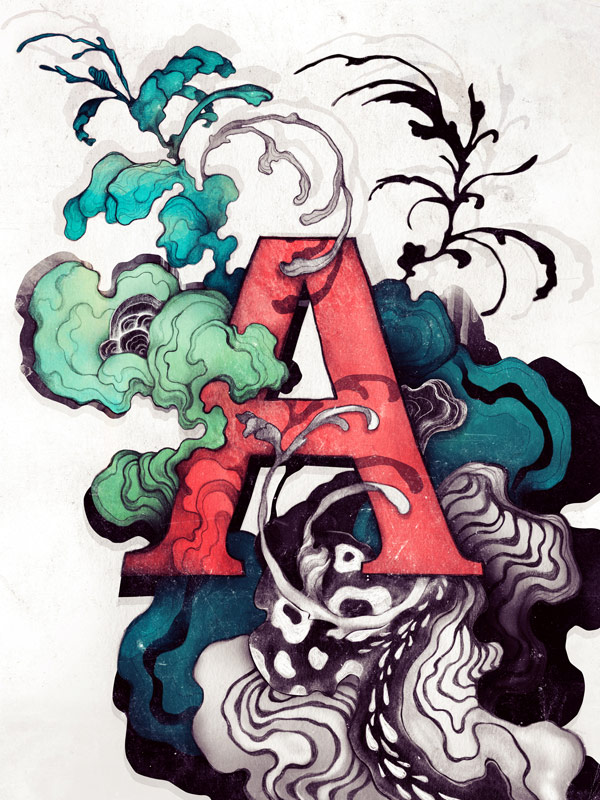
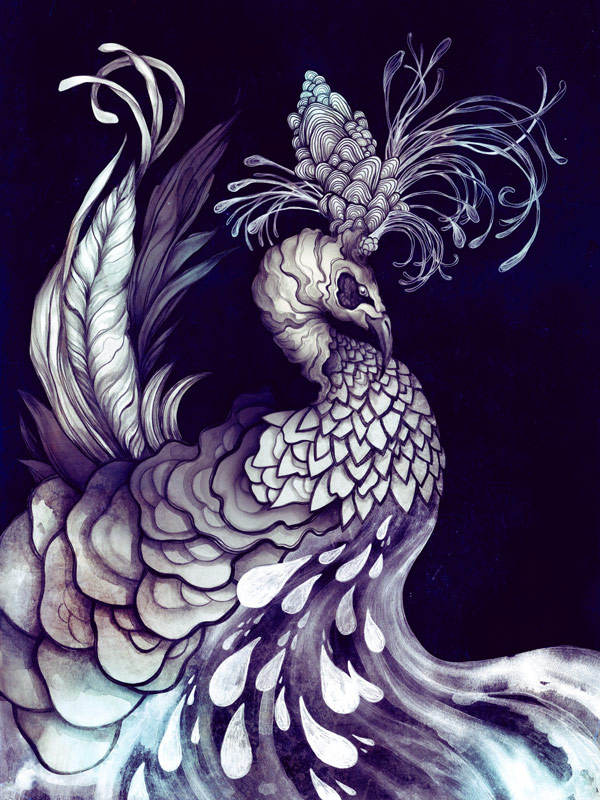
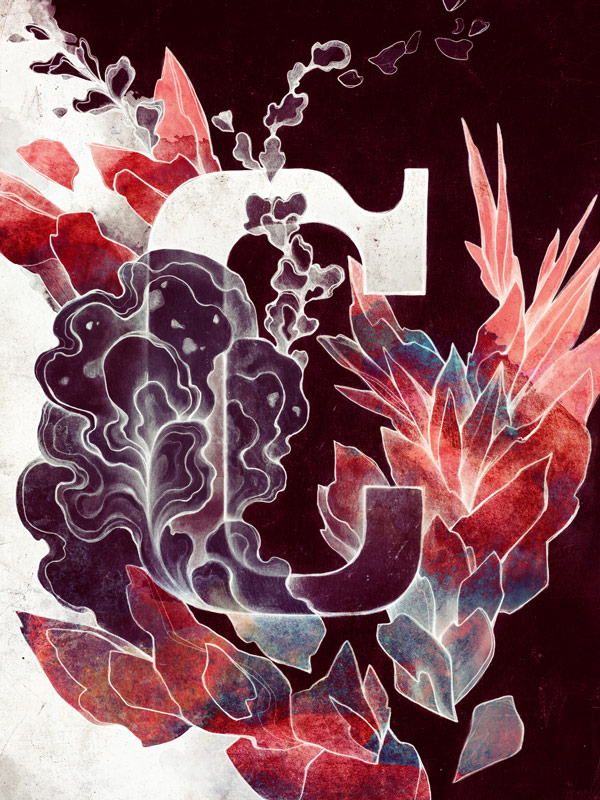
Did you have an “aha” moment when you knew what you wanted to do?
I don’t think I’ve ever had an “aha” moment. I think it was more about asking myself, “Does it feel good to make this stuff?” I didn’t even know that illustration was something I could get paid to do until I was working at my first design job.
Well, maybe my “aha” moment was when I got my first internship through an older friend I knew who went to the same tattooer as I did. The internship was at EngineThree, which does a lot of websites for model management agencies. I learned a lot there and maybe that was the “aha” moment: I was working with cool people who had tattoos and were creative; they were my kind of people.
In junior high and high school, the images I looked to for creativity were fashion spreads. The crazy costumes and styling inspired me to draw imaginatively. Suddenly, I was working at an agency, scanning images from fashion shoots and realized that that was somebody’s job—to stage big, expensive photo shoots. Working at a web agency seemed like the closest I could get to that. That translated into learning how to build websites and after the internship at EngineThree, I got a job at the really small boutique agency.
Did you have any mentors along the way?
Definitely—all of my art teachers through the years, especially Diego Sanchez and Rita Root. I actually didn’t have that many art teachers in college who I connected with, but outside of that, there was Tim Miller and Paris Fleezanis from EngineThree and Joshua Davis, who is still a mentor to me even though I’m a grown-ass woman (all laughing), and also my parents for sure.
Out of everyone, though, I think that Josh has been the biggest mentor. Even though he’s super successful, he took interest in me and has helped me make a lot of connections that have been beneficial to me.
How did you two meet?
I actually reached out to him about four years ago because I’m a fan of his work. He gets so many emails on a daily basis, so I’m not sure why he decided to respond to me. I had sent him some illustrations and we also had some mutual friends, so maybe that helped. He invited me out to tour his studio in Long Island, which was really awesome. After that, he gave me some assignments and we worked on a collaborative project. He has continued to be super supportive and has introduced me to other artists. Last month, we did another collaboration together, which was for a show at the Contemporary Arts Center in Cincinnati—it will be up for six months.
Was there a point in your life when you took a big risk to move forward?
Anything that involves public speaking is a risk for me because I hate it, but it’s an awesome way to meet people and be inspired. In general, I think conferences are funny because creative people are being asked to speak, but by definition, many of them are introverts and spend a lot of time alone. The personalities that come out on stage are so funny and that makes me feel better when I’m feeling nervous or shy.
Also, client work still feels like a risk because I’m self-taught and don’t know what I’m doing most of the time. When you’re doing a client job, you have to own it. It’s also really hard because all my images are hand-drawn and clients don’t always understand how their feedback changes the work. I can redo work, but that means I have to redraw it and that takes a bit of time. In that way, client work is a risk in regards to timelines and the commitment of accepting a job that might not be worth it. At the end of the day, I just have to do it because I want to.
Are your friends and family supportive of what you do?
Yes. Most of my friends are producers and don’t really know or follow what I do and I like that; we’re just friends because we like to tell fart jokes and eat pizza together. (laughing) My other friends, who I like to talk about work with, are ones I’ve met through work and art collectives. I’m also part of this group called Depthcore, which is kids from all over the world who knew each other on the Internet first and then met in real life. Everyone happens to be really cool and there are a lot of them in New York, like Justin Maller, Karan Singh, Sougwen Chung.
As far as my family, they might not always understand what I do, but they’re very supportive. I don’t think they knew how I would make a living being an artist. They didn’t have any answers for me or a checklist of what I could do to achieve success, but I think they had faith that I would be smart and savvy enough to figure it out. My mom is especially supportive and I’m really close to her; I talk to her an embarrassing amount of time each week, but it’s nice to have someone who knows me so well to act as a sounding board.
Are you the first person in your family to make a living creatively?
Yes. I mean, the other people in my family are more musically inclined, which is baffling because I am basically tone-deaf. My sister can write music and sing and my uncle composes music on piano. Unfortunately, I did not get any of those genes. My dad is a doctor and my mom is in finance, so there’s not any direct link there.
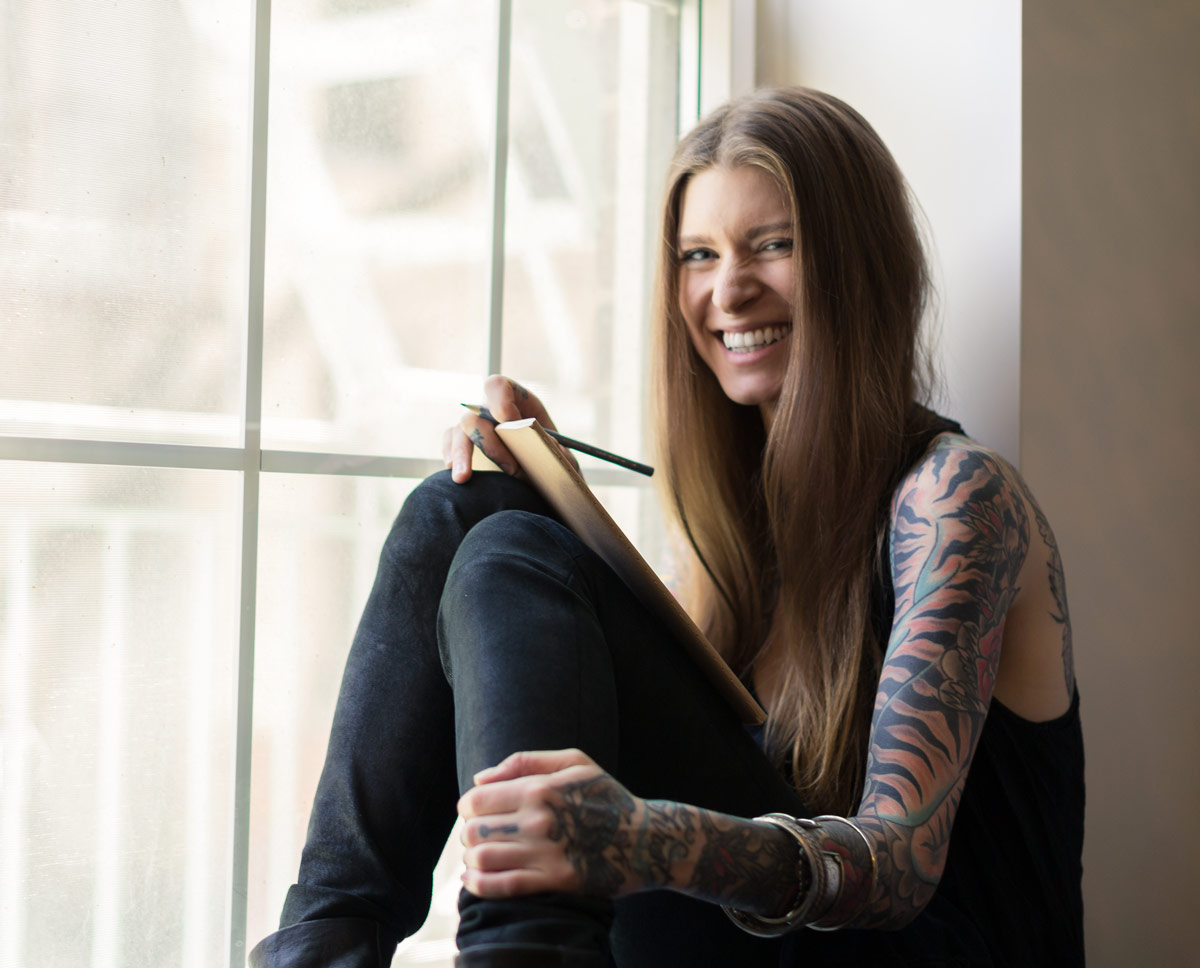
“…I like illustration because it involves making something that exists outside of yourself and has a life past you. That’s also incredibly scary because it’s going to exist forever and you want to represent yourself well.”
Do you feel a responsibility to contribute to something bigger than yourself?
Even though I do want to give back, I feel selfish a lot. For me, it’s always been an exercise in figuring out how to pay my bills first and then finding time to do my art. When I do commercial illustration jobs, I often don’t feel like I’m doing any good. Commercial illustration is a weird thing because you’re taking something that should be feel-good and using it to sell products that you may not believe in. The first time I had to confront myself with this was when I got a well-paying job offer for a widely known cigarette brand. I decided that it would be really irresponsible to take the job and work for a cigarette company, even though I had been smoking for years (laughing)—but not anymore! I declined the job.
When I’m not doing stuff for work, I like to do things for charity. Whenever I’m approached to contribute art for a good cause, I try to say yes because charity work is awesome. It’s similar to a job because you get a brief and have a rough theme, so it feels challenging, but you still have a lot of freedom. The reward is two-fold: you do something for a good cause and the organization makes you feel like you’ve done a good job.
But to answer the bigger question, I think I like illustration because it involves making something that exists outside of yourself and has a life past you. That’s also incredibly scary because it’s going to exist forever and you want to represent yourself well.
Are you satisfied creatively?
No! I wish I could draw all day long. I think I’m getting closer because I’ve struck a better balance between my graphic design job and freelance illustration. I feel less pressure to take every illustration job that comes around and I’m finally sleeping more because of that.
Is there anything you want to do in the next 5 to 10 years?
I want to make much larger pieces, which is difficult because I work pretty small and everything is scanned and colored on the computer. I’d like to do an entire space from floor to wall to ceiling; I’d also like to do some installations. But really, my biggest goal is to be happy, which means having time to ride my bike, run, do art, and not be broke.
Cheers to that!
“You’re going to have to do certain things to make money and certain things to fulfill yourself creatively and they’re not always the same thing…”
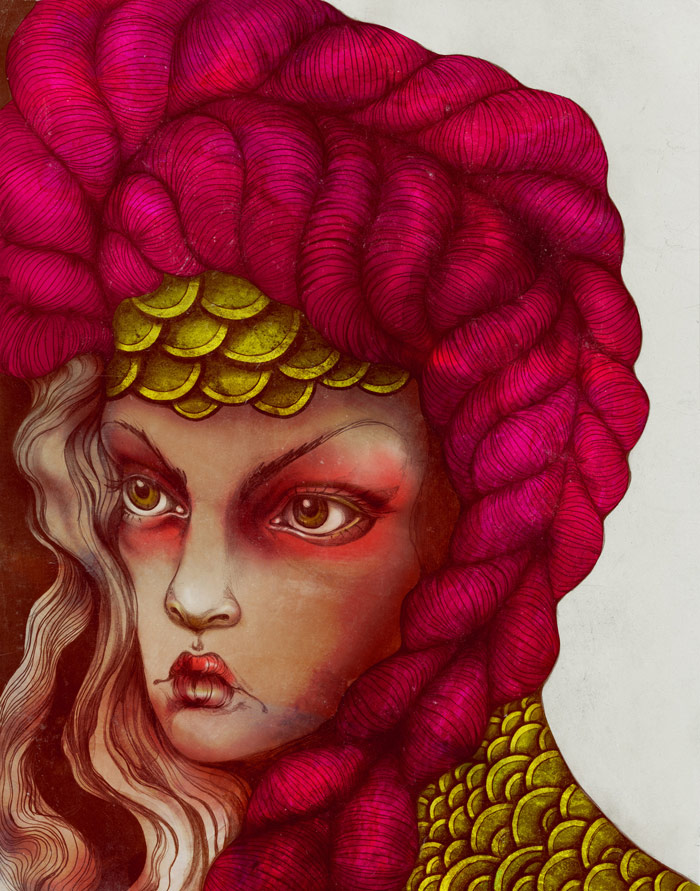
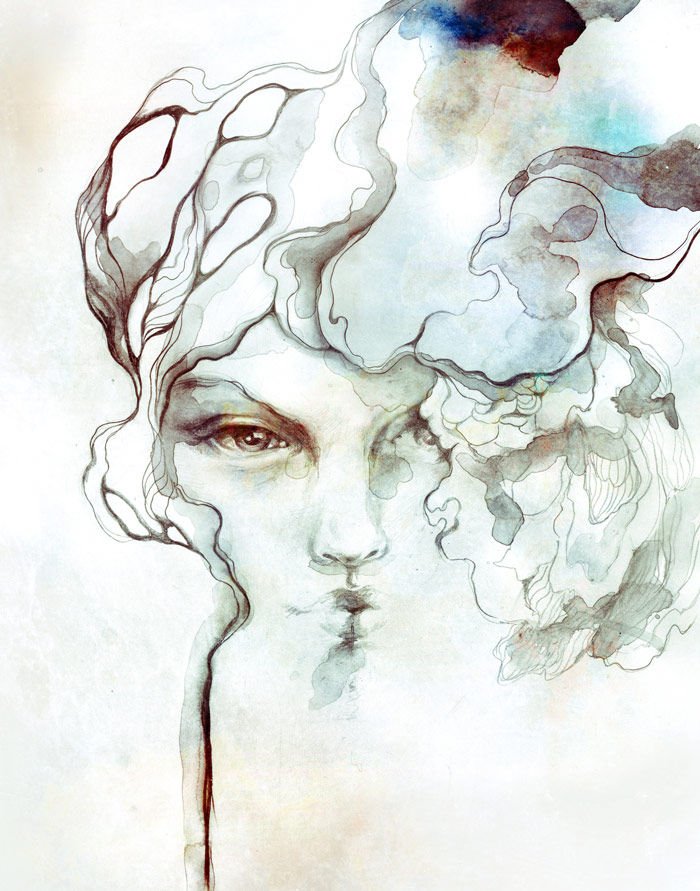
What advice would you give to a young illustrator starting out?
Work your ass off. It’s not going to be easy and you’re going to hear “no” a lot. I’ve considered being a barista many, many times in my adult life just to get out of an office job. You’re going to have to do certain things to make money and certain things to fulfill yourself creatively and they’re not always the same thing, so don’t freak out. Make lots of work; the work speaks for itself.
How does where you live impact your creativity?
There is so much visual overload here. A lot of the textures in my pieces are from photos of things I find on the street: parts of the sidewalk, graffiti, paint smears. I draw a lot of trees, animals, and other nature-inspired things, but the layered textures are city-based, which is a happy accident. I didn’t intentionally think about it, but I live here, so I inject the city into my work. Also, the energy here is amazing and I can’t help but stay up late and work, even though that can sometimes be unhealthy.
Is it important to you to be part of a creative community of people?
Yes, but I don’t know a lot of people who work identically to me. The Internet does help immensely. Being able to send screenshots to friends or get feedback from them online is really helpful. Also, I’m part of the Depthcore collective and when we meet up, we don’t talk about illustration or work. We drink beer and eat barbecue and it’s awesome. I think that feels really good because if you spend too much time on your computer or social networks, then you get brainwashed into thinking they matter more than they do.
What does a typical day look like for you?
I wake up at 8:30–9am, roll out of bed, and go get coffee at Third Rail on Sullivan Street. I immediately hop onto email and take care of that and then the next 8–10 hours are spent working on graphic design for IBM. Next, I spend an hour or so on personal work or office management. Then I exercise for two hours and from 9pm to midnight or 9pm to 4am, I work on illustration. The weekends are for drawing and fun-having.
What are you listening to right now?
A.A. Bondy, pg. lost, Atoms for Peace, Deer Tick, Middle Brother, A Sight Below, and I always go for the classics like Broken Social Scene and Radiohead.
Your favorite movie?
I have a lot. Anything by David Lynch; Paris, Texas; and Legend, which I watched so many times as a kid. One of my all-time favorites is True Romance and I also like a good Bruce Willis action movie—that’s my guilty pleasure for sure. He’s such a babe!
Do you have a favorite book?
Still Life with Woodpecker by Tom Robbins, which is the greatest love story of all time. I actually have the character, Bernard Mickey Wrangle, as a woodpecker with his red match tattooed on my stomach.
Your favorite food?
Is it weird to say Brussels sprouts?
Not at all.
Ok, then. I would say Brussels sprouts or mint chocolate chip ice cream—but hopefully not together! (laughing)
What kind of legacy do you hope to leave?
It would be amazing if I could leave any kind of legacy. I just want to make pretty things that people want to look at.